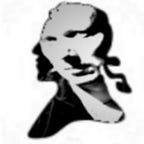A not all-inclusive list of Tetrahedral structures, could look like this:
TetraZeron — The centerpoint of a Tetrahedron.
Tetrahedron — A generic Tetrahedron.
Tetraduon — Minor reflection group. One generic Tetrahedron and one corresponding reflection; an abstraction as they overlap.
TriTetra — Major reflection group. The three possible reflections of a Tetrahedron sans central Tetrahedron. The reflected and central Tetrahedron not included as it would overlap the reflections.
TetraPoint— Center of a Tetrahedron.
TetraSphere — A self-intersecting number of TriTetra around a TetraPoint intermorph into a mean volume; TetraSphere. In analogy with triangular incircles / excircles one could differentiate this further, but let us be content with this now.
Petrahedron — Greek penta, meaning five, here inspires the name. A Petrahedron is a set of the four vertices of a Tetrahedron and the corresponding Tetrapoint. Greek petra, meaning ’rock’ or ’stone’, is chosen also because it implies the liminal nature of four.
With Petrahedron, solid as a rock, the path from the four first solidifies. Now we are set to return back to five, where we shall see what happened while we were upon our excursion. But before returning to five, let us return to an even earlier point, from which five was the excursion, let us return to the expression defining the relationships of phi.
Fractal Wonderland
I think of the vinculum as a ’bar’, making what is below it underbar. The word underbar happens to be Swedish for ’wonderful’, wonder and below both being ’under’ in my language.
So what is in denominator land, under the bar, is a place I am lead by the immutable power of association to think of as Wonderland. Denominator land being part of a fraction, association leads me, again, this time to think of Denominator Land as Fractal Wonderland.
Down the rabbit hole, we were looking at this:
t / (t/t — t — t^2)
Second term
Second item underbar is t. Its value here, unlike ’overbar’, is negative. On the number line, every positive number has a corresponding negative number at equal distance from zero. We have removed ’number’ from our expression in the previous step, so we are now on the ’term line’, meaning that this underbar t is an identical but radically different t. Generalized, numerator does not equal denominator, but though they are radically opposed, they are necessary parts of any fractional expression.
Third term
Third item underbar is t-squared, or t multiplied with itself. It, too, is negative. As every number squared itself, including negative numbers, becomes a positive product, it is obvious that the third item can not represent any positive or negative number. What has a negative identity and is a square is called imaginary.
Let us now restate the above clarification in a more compact format, which will require that it becomes a bit indefinite.
The term t divided by this group :
—itself divided by itself,
—’opposite’ itself,
—imaginary itself
Interpretation to follow ’here’, ’here’ and ’here’. [These ’here’ will be replaced by real links to real places one day.]
The relationship between consecutive numbers F(n), F(n+1), F(n+2) in the Fibonacci series approaches what is called the golden ratio, the transcendent constant 1.6180339887…
That it is transcendent means that it cannot be expressed finitely, at least not in mathematical terms. That it cannot be expressed finitely means that it cannot be expressed as a fraction. It can be expressed only infinitely, as an unending series of numbers like the Fibonacci series, or indefinitely, as the neverending series of the constant 1.618….
This constant has been christened phi and given the following symbol:
𝜑
To be continued ’here’. The pseudo-numerological series will continue with a link ’here’. Paths also bifurcate here.
